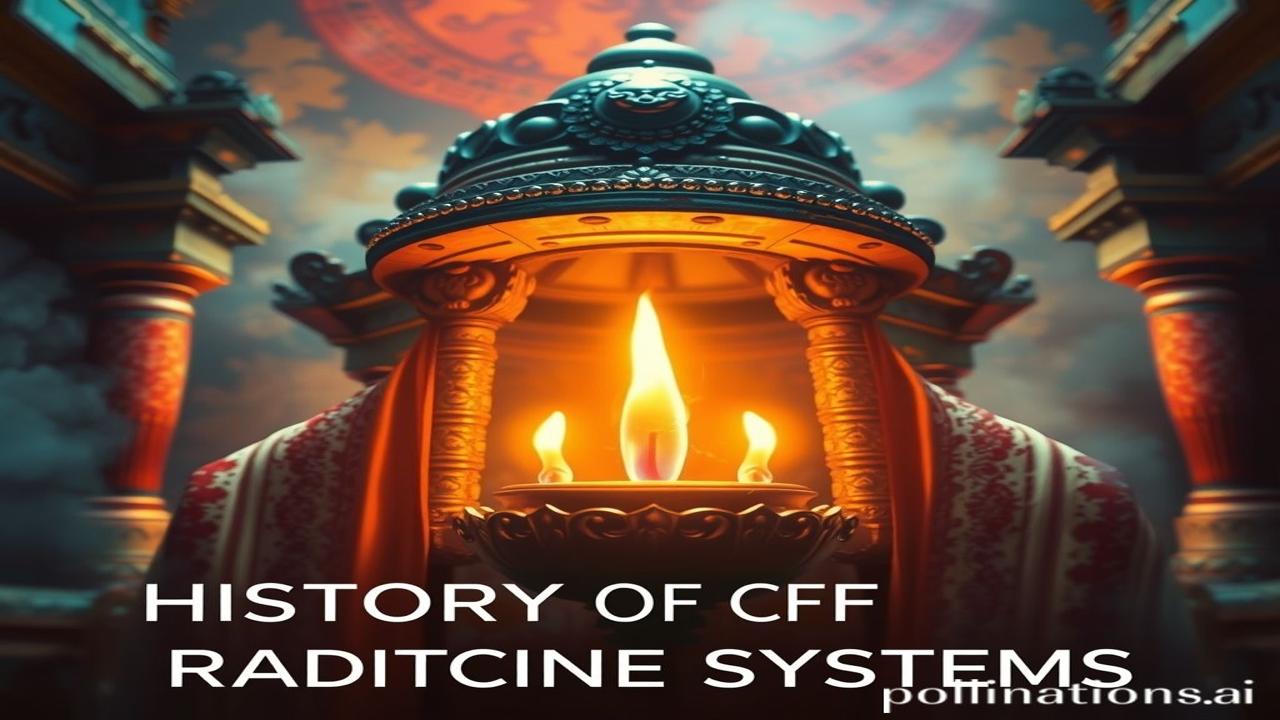Waqt Ki Parchaiyon Mein: A Journey Through India’s Traditional Medicine Systems
Kabhi socha hai, jab doctor nahi the, science itna aage nahi tha, tab logon ne apni sehat ka khayal kaise rakha hoga? Imagine, 5000 saal pehle, jab internet nahi tha, koi pharmacy nahi thi… tab bhi log jeete the, aur kai toh bahut healthy bhi hote the! Waqt ki dhool mein chupi hain, un purani chikitsa paddhatiyon ki kahaniyan, jinhone Bharat ko ‘health’ aur ‘healing’ ka matlab sikhaya. Let’s uncover them together.
Itihasik Pishthbhumi: Unveiling the Roots
Traditional medicine systems, in essence, are holistic approaches to healthcare that predate modern science. India mein, these systems are incredibly rich and diverse, with the most prominent being Ayurveda, Yoga, Siddha, and Unani.
-
Ayurveda: Often called the “Science of Life,” Ayurveda originated in India around 5000 years ago. It’s based on the principle that the body is governed by three doshas – Vata, Pitta, and Kapha – and maintaining their balance is key to good health.
-
Yoga: Although often associated with physical postures, Yoga is a comprehensive system that aims to unite the mind, body, and spirit. Its origins can be traced back to ancient India, with Patanjali’s Yoga Sutras codifying its principles.
-
Siddha: Predominantly practiced in South India, Siddha medicine is believed to have originated from the Siddhas, enlightened beings who possessed profound knowledge of healing. It emphasizes the use of metals and minerals in its treatments.
-
Unani: Unani medicine, also known as Greco-Arabic medicine, came to India with the Delhi Sultanate in the 13th century. It’s based on the concept of four humors – blood, phlegm, yellow bile, and black bile – and their balance.
Yeh systems sirf ilaaj nahi karte, balki prevention par bhi focus karte hain. They tell us how to live in harmony with nature and maintain a healthy lifestyle. Inki importance isliye hai kyunki yeh hamari Sanskriti ka ek important hissa hain, aur aaj bhi lakhon logon ko fayda pahuncha rahi hain.
Zameeni Sach: Logon Ka Jeevan
Imagine a village in ancient India. The air is filled with the scent of sandalwood and herbs. A Vaidya (Ayurvedic practitioner) sits in his small clinic, examining a farmer who complains of fatigue. The Vaidya checks his pulse, asks about his diet, and then prescribes a decoction of Ashwagandha and some lifestyle changes.
Meanwhile, in the royal court, a Hakeem (Unani physician) attends to the king, carefully balancing his humors with a special diet and herbal remedies. Dancers practice Yoga asanas to strengthen their bodies and minds for their performances. In the fields, farmers use traditional knowledge to protect their crops from pests and diseases.
“Kya hua, Beta?” the Vaidya asks the farmer, his voice calm and reassuring. “Tumhara Vat dosh badh gaya hai. Zara yeh kaadha piyo aur apne bhojan mein ghee ki matra badhao.”
Ma Rukmini apne ghar ke aangan mein tulsi ke paudhe ko paani de rahi hain, knowing that this sacred herb protects her family from illness.
These systems were interwoven into the fabric of daily life, accessible to everyone, from the ruler to the farmer. They weren’t just about medicine; they were about a way of life.
Dharohar Aur Pehchan: Echoes of the Past in the Present
Aaj bhi, in traditional medicine systems ki importance kam nahi hui hai. Ayurveda, Yoga, Siddha, aur Unani, all continue to thrive in India, providing healthcare options that are rooted in our culture and traditions.
- Rituals: Many daily rituals, like drinking turmeric milk (haldi doodh) for its anti-inflammatory properties, are based on Ayurvedic principles.
- Art and Architecture: The principles of Vastu Shastra, an ancient architectural system, are based on Ayurvedic concepts of balance and harmony.
- Festivals: The festival of Dhanteras celebrates Dhanvantari, the god of Ayurveda, highlighting the importance of health and well-being.
- Language: Many Hindi words related to health and medicine have their roots in Sanskrit, the language of Ayurveda.
- Values: The emphasis on holistic health and living in harmony with nature reflects the core values of Bharatiya Sanskriti.
In systems ne humari pehchaan banai hai, ek aisi pehchaan jo humein apni roots se connected rakhti hai. Today, there is a growing global interest in these systems, with people seeking natural and holistic approaches to healthcare.
Mazedar Tathya Ya Bhram-Bhanjak: Unveiling the Truth
Log samajhte hain ki Ayurveda sirf jadi-butiyon se ilaaj karta hai, lekin asli sach yeh hai ki Ayurveda mein Panchakarma, ek detoxification therapy, ka bhi bahut important role hai. Panchakarma involves five cleansing procedures that aim to eliminate toxins from the body and restore balance.
Another misconception is that Yoga is just about physical postures. In reality, Yoga is a comprehensive system that includes ethical principles (yamas and niyamas), breathing techniques (pranayama), and meditation (dhyana).
Drishya Aur Bhavanaen: Painting the Scene
Imagine the aroma of burning incense in a temple dedicated to Dhanvantari. The sound of chanting mantras echoes through the halls. The cool touch of stone walls covered in intricate carvings depicting medicinal plants. The taste of a bitter herbal concoction that promises healing. The feeling of lightness and energy after a Yoga session.
These sensory experiences were all part of the healing process, creating an environment that fostered well-being and connection to something larger than oneself.
Antim Vichar Ya Uddharan: A Closing Reflection
“सर्वे भवन्तु सुखिनः, सर्वे सन्तु निरामयाः । सर्वे भद्राणि पश्यन्तु, मा कश्चिद् दुःख भाग्भवेत् ॥” (Sarve Bhavantu Sukhinah, Sarve Santu Niramayah. Sarve Bhadrani Pashyantu, Ma Kashcid Duhkha Bhagbhavet)
May all be happy, May all be free from illness, May all see what is auspicious, May no one suffer.
Yeh shloka humein yaad dilata hai ki asli health sirf shareer ka fit hona nahi hai, balki sabka acha hona hai. India’s traditional medicine systems are not just about treating diseases; they’re about promoting holistic well-being and living in harmony with ourselves, each other, and the natural world. They are a treasure trove of knowledge that we must preserve and share with the world.
